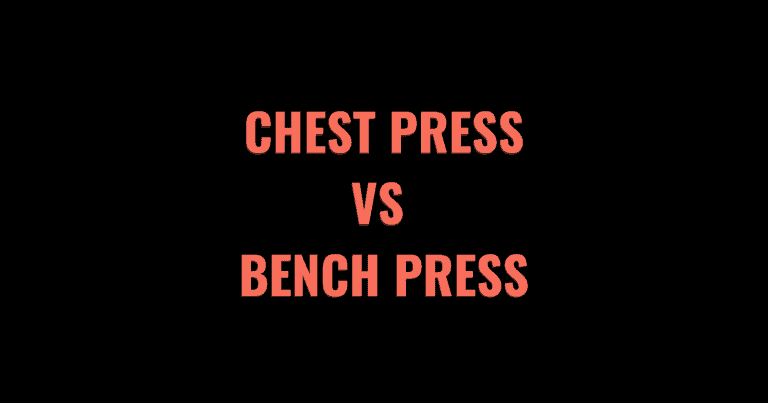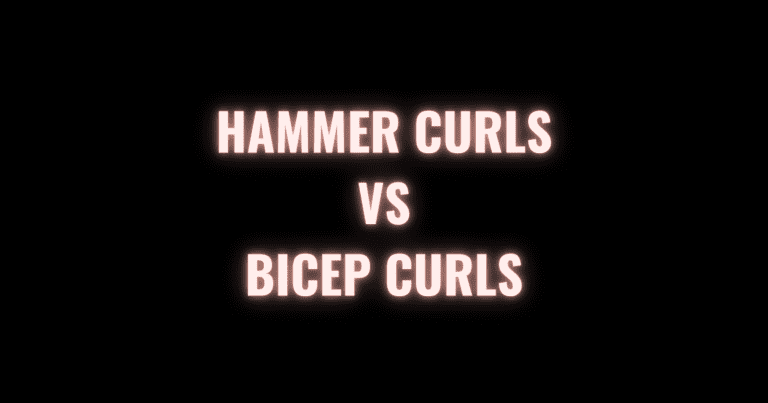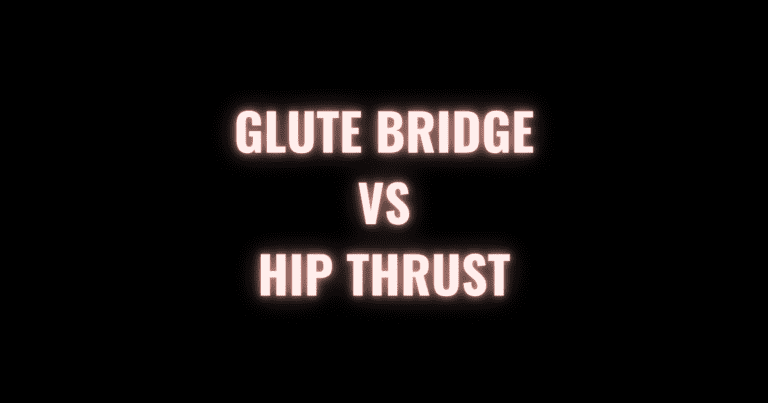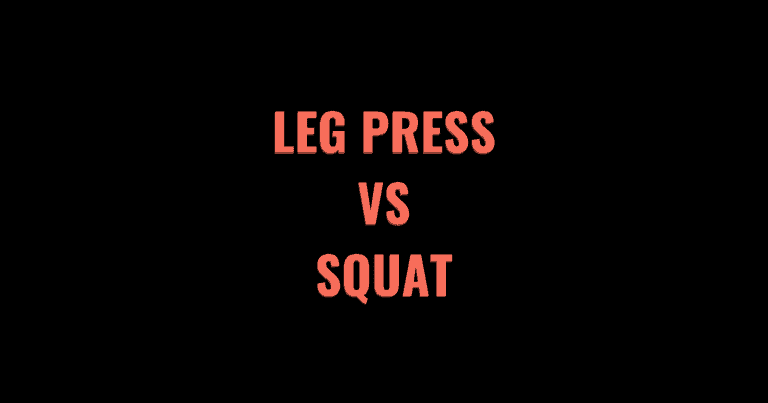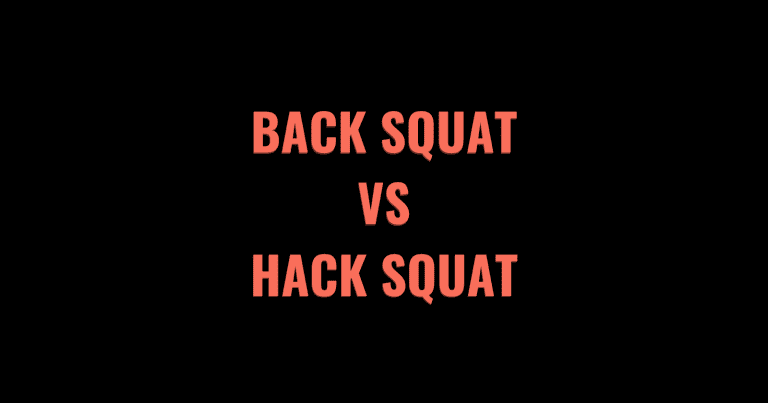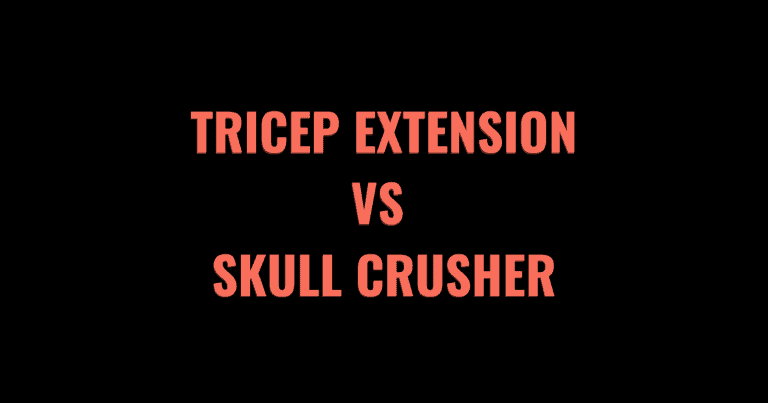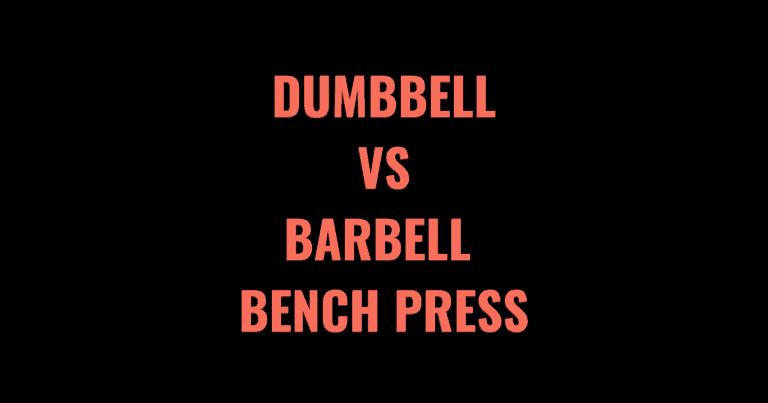Whether you’re a powerlifter, strongman, bodybuilder, or average joe that wants to build a stronger and more impressive back, having a hip hinge movement in your routine is crucial.
There are several exercises that fall into the hip hinge movement category. Two of the most popular are the rack pull and deadlift.
As the name suggests, in order to do a rack pull, you must have a squat rack because the bar is positioned just below knee height. Rack pulls are very popular in the bodybuilding space because they are great for growing your traps, lats, and upper back. However, rack pulls are also utilized in strength sports since they help improve the lockout on a deadlift.
Deadlifts start from the ground, are more difficult to perform, and engage more muscles. Along with bench press and squats, deadlifts are one of the primary ways people test their strength, especially in competitions.
The deadlift places a lot of stress on the spine, which drastically increases injury risk, especially to the lower back. Not to mention, there’s a shorter range of motion with rack pulls, which allows people to lift more weight.
Although deadlifts and rack pulls have a similar movement pattern and even target some of the same muscles, which one is better for strength and which is better for hypertrophy?
Should you do rack pulls if you already deadlift?
Are rack pulls a better alternative?
All of these questions and more will be discussed in this article! More specifically, we will be covering the main differences between rack pulls and deadlifts, the pros and cons of each exercise, and when and how to do them properly.
Table of Contents
- 1 What’s the main difference between Rack Pulls and Deadlifts?
- 2 Pros and Cons
- 3 When to Perform an Exercise
- 4 Muscles Used
- 5 Exercise Form
- 6 Rack Pull vs. Deadlift: Which One Should You Do?
- 7 Other Exercise Comparison Posts
- 7.1 Bench Press vs Chest Press: Pros and Cons
- 7.2 Floor Press vs. Bench Press: Pros, Cons, and Differences
- 7.3 Hammer Curls vs Bicep Curls: Which is Better?
- 7.4 Glute Bridge vs Hip Thrust: Differences & Benefits
- 7.5 Leg Press vs. Squat: Differences, Pros, and Cons
- 7.6 Flat vs. Incline Bench Press: Which is Better?
- 7.7 Preacher Curl vs Concentration Curl: Which is Better?
- 7.8 Hack Squats vs. Back Squats: Pros and Cons
- 7.9 Dips vs Bench Press: Pros & Cons
- 7.10 Preacher Curl vs Bicep Curl: Differences, Pros, and Cons
- 7.11 Tricep Extension vs Skull Crusher: Pros and Cons
- 7.12 Dumbbell vs Barbell Bench Press: Differences and Pros & Cons
What’s the main difference between Rack Pulls and Deadlifts?
The main difference between rack pulls and deadlifts is the height of the starting position. Rack pulls are performed using a squat rack and the barbell is placed just below the knees. On the other hand, deadlifts start from the floor and aren’t typically performed in a squat rack but rather in an open space or on a deadlift platform.
Rack pulls are primarily used as an assistance exercise to the deadlift or as a way to strengthen and grow the back. Deadlifts are a great exercise to use if you want to strengthen and grow your entire posterior chain, including erectors, lats, glutes, and hamstrings.
Deadlifts engage more muscles overall but they place more strain on the lower back; therefore, there’s a greater risk involved. Conversely, pulls isolate the back to a greater extent while placing less strain on the lower back.
Pros and Cons
Rack Pull Benefits
Here are some benefits of rack pulls:
- Rack pulls are an effective exercise for increasing your grip and pulling strength. They are also great for adding more size to your forearms and back, specifically the traps, lats, and erectors. If your back strength is lagging, doing rack pulls is a good idea.
- Since the movement starts just below or above your knee, it can help improve your lockout strength and positioning, which carries over nicely to the deadlift.
- Rack pulls place less stress on the lumbar spine, also known as the lower back, so they can help limit the amount of stress placed on that area. They are better for anyone with limited mobility and/or back injuries or pain.
- Due to the shortened range of motion compared to deadlifts, you are normally stronger with rack pulls, and it may be safer to train to failure.
- Rack pulls are a great way for beginners to learn how to deadlift. Once they have mastered the rack pull, they can work up to lifting from the floor.
- Rack pulls can be easily adjusted to fit the person regardless of height.
- You only need a barbell, plates, and a squat rack to perform rack pulls, so no fancy equipment is necessary. Most deadlifts need plates that are the same height as 45lb plates to get into proper position, but with rack pulls, that doesn’t matter. You can use any size plate because you’re not starting from the floor.
- You don’t need a spotter with rack pulls, but this can also be said for deadlifts.
- Loading and unloading plates from a rack pull are much easier than a deadlift unless you have a deadlift jack or block.
Rack Pull Cons
Here are some disadvantages of rack pulls:
- You need a squat rack to perform rack pulls, whereas, with deadlifts, you don’t.
- Rack pulls do not target as many muscles as the deadlift.
- People tend to get carried away with how much weight they put on the bar for rack pulls. Adding too much weight increases the chance of poor form and potential injury.
- If you are trying to improve your deadlift, and struggle with pulling the weight off of the floor, rack pulls will not provide many benefits. You would be better suited to doing deficit deadlifts.
- Your grip is likely to fatigue before your back does, so you may have to use lifting straps.
- Rack pulls are not as functional compared to deadlifts. You’re more likely to lift something from the ground rather than knee height.
Deadlift Benefits
Here are some benefits of deadlifts:
- The deadlift engages nearly every muscle in the body, including the core, back, forearms, hamstrings, and glutes. They are a great movement if you are limited on the amount of time or number of days you can train.
- It’s often used in competitions such as powerlifting, CrossFit, and strongman to assess strength.
- It’s very effective at increasing total body strength and adding muscle mass to your back, hamstrings, glutes, quads, and forearms.
- Minimal equipment is required; all you need is a barbell, plates, weight clips, and enough floor space.
- Numerous deadlift variations can be utilized, such as sumo, conventional, deficit, trap-bar, etc.
- Great for improving grip strength.
- Deadlifts are a very functional movement that has a lot of carrying over to other sports and activities of daily living.
- You don’t need a spotter because it’s easy just to drop the weight onto the ground if you fail.
Deadlifts Cons
Here are some disadvantages of deadlifts:
- Deadlifts can be very difficult to recover from, especially since they target so many different muscle groups at one time. That’s why most people only deadlift once per week.
- Deadlifts place a lot of stress on the lumbar spine, and going too heavy can significantly increase lower back injury risk.
- They require greater mobility in the knees, hips, and ankles to be performed properly.
- Your grip is likely to give out before other muscles do, so you may have to utilize lifting straps, a mixed-grip, or a hook-grip to get around this issue.
- It’s important to have an Olympic barbell and plates that are the same height as 45lb Olympic plates to get into the proper starting position. If you aren’t strong enough to lift 135lbs, then see if your gym carries 10lb, 15lb, or 25 lb bumper plates.
- Some gyms may require you to use a deadlift platform. Plus, uneven gym floors can cause issues when trying to deadlift.
- You’re more likely to scrape your shins on a deadlift than with rack pulls.
When to Perform an Exercise
When to perform a Rack Pull
Rack pulls are ideal for those wanting to improve their lockout on a deadlift, increase the size and strength of their upper back, forearms, and erectors, and/or reduce the amount of strain placed on the lumbar spine.
Rack pulls are a great accessory movement to deadlifts, however, they aren’t normally programmed on the same day due to how demanding both exercises are. If you also perform deadlifts, then dedicate another day to focus on rack pulls.
Since rack pulls don’t engage the lower body as much as deadlifts, they are normally done on back, pull, or upper body days. Being a compound movement, it’s a good idea to do rack pulls early on in the workout as the first or second exercise.
If your primary goal is to increase strength, using the 1-5 rep range is going to be where you spend most of your time. But if your goal is back hypertrophy, then the 6-12 rep range is a better place to be.
When to perform a Deadlift
Anyone who wants to increase the size and strength of their posterior chain (back, glutes, hamstrings), compete in powerlifting, CrossFit, or strongman, and doesn’t have any back injuries or pain should consider adding deadlifts to their routine.
Deadlifts work nearly the entire body, making them a very time-efficient exercise. Like rack pulls, deadlifts are a very demanding exercise, so performing them at the beginning of your workout is ideal.
Deadlifts are usually performed on back, pull, or upper body days, but some would argue that they are best saved for lower body workouts. Since the recovery demand is high from deadlifts, most people only train them 1-2 times per week.
It’s important to note that if you are preparing for a competition, such as a powerlifting meet, then doing squats, bench, and deadlifts on the same day will help you prepare. Deadlifts can be trained in a variety of rep ranges, including 1-5 reps for strength, 6-12 reps for hypertrophy, and even 12-20 reps for muscular endurance.
Muscles Used
Rack Pull Muscles Used
The rack pull primarily works the erectors, traps, lats, and rhomboids. It also engages the forearms, glutes, hamstrings, quads, and adductors.
Primary
- Trapezius
- Erector Spinae
- Rhomboids
- Latissimus Dorsi (Lats)
Secondary
- Glutes
- Gluteus Maximus
- Gluteus Minimus
- Hamstrings
- Biceps Femoris
- Semitendinosus
- Semimembranosus
- Adductors
- Adductor Magnus
- Quads
- Rectus Femoris
- Vastus Lateralis
- Vastus Intermedius
- Vastus Medialis
- Forearms
Deadlift Muscles Used
The deadlift primarily targets the hamstrings, glutes, and erectors. Secondly, the deadlift engages the forearms, quads, adductors, traps, lats, rhomboids, and core. It’s important to note that the quads, glutes, and hamstrings are much more activated during the deadlift than a rack pull.
Primary
- Hamstrings
- Semitendinosus
- Semimembranosus
- Biceps Femoris
- Glutes
- Gluteus Maximus
- Gluteus Minimus
- Erector Spinae
Secondary
- Quadriceps
- Rectus Femoris
- Vastus Medialis
- Vastus Intermedius
- Vastus Lateralis
- Forearms
- Latissimus Dorsi
- Trapezius
- Core
- Transverse Abdominus
- Adductors
- Adductor Magnus
Exercise Form
How to perform a Rack Pull properly
- You will need a squat rack, Olympic barbell, weight clips, and Olympic plates to perform this movement. It’s also good to use flat-soled shoes and lifting straps if your grip becomes a limiting factor.
- Set up the safety pins of a squat rack to such that the bar is just above or below knee height.
- Step into the rack, and stand with a shoulder-width stance. The bar should be above the middle of your foot.
- Grab the barbell just outside your legs with a double overhand grip.
- Position your shoulders so that they are either just in front of or in line with the barbell.
- Before starting the movement, take a deep breath in and contract your lats by thinking of pulling the bar into your body while keeping your arms straight.
- Start the lift by driving your hips forward to extend your upper body.
- As you approach lockout, retract your shoulders and squeeze your glutes until you’re standing straight up.
- After a slight pause, begin to bend at the hip and knees to guide the barbell back to the starting position.
- Once the barbell is at a dead-stop, repeat for the desired amount of reps. Try to keep a neutral spine by looking straight ahead and removing any rounding of your lower back.
Watch this video from Athlean-X to see how to do rack pulls correctly and some common mistakes to avoid!
How to perform a Deadlift properly
Please note that the instructions below are for a conventional deadlift; if you prefer a sumo stance, then the instructions will vary.
- To do this movement, you’ll need an Olympic barbell, Olympic plates, weight clips, and enough floor space. You should consider using flat-soled shoes and lifting straps.
- Set up the barbell with an appropriate amount of weight.
- Place your feet under the barbell with a shoulder-width stance. The barbell should be just above the middle of your foot.
- Using a double overhand grip, bend over to grab the barbell. Place your hands just outside your legs.
- Bend your knees and hips until the barbell is just touching your shins.
- Before starting the pull, retract your shoulders and contract your lats to pull the slack out of the bar. Keep your chest up and look straight ahead.
- Take a deep breath and straighten your knees by “pushing the floor away.”
- Once the barbell is just above knee height, straighten your hips by thrusting them forward.
- As you approach lockout, squeeze your glutes and hamstrings.
- After a slight pause, begin to reverse the motion by bending the hips and the knees until the barbell returns to the floor.
- Repeat for the desired number of reps. Avoid rounding your lower back since it will increase the risk of injury. If you notice lower-back rounding, lighten the weight and focus on improving your form.
Check out this video from Athlean-X to see what steps you should take to ensure that you’re doing a deadlift properly.
Rack Pull vs. Deadlift: Which One Should You Do?
When it comes to gaining strength and size simultaneously, nothing beats a traditional deadlift. They are one of the most effective and functional exercises that exist. Not to mention, all you need is a barbell, some weights, and floor space to perform them.
However, if you suffer from poor mobility, back injuries/pain, or cannot deadlift for any other reason, then rack pulls are a great alternative. Furthermore, if you struggle with the lockout portion of your deadlift, then adding rack pulls may be the key to your next PR.
It’s clear that rack pulls are superior to deadlifts if your goal is to strengthen and grow your back. This is because rack pulls do a better job at isolating the back while reducing the strain placed on the lumbar spine. It’s no surprise that rack pulls are quite popular amongst bodybuilders.
If you can do both exercises safely and with good technique, then it’s a good idea to incorporate rack pulls and deadlifts into your routine.
Other Exercise Comparison Posts
If you enjoyed this post, check out our comparisons of other popular exercises below.
